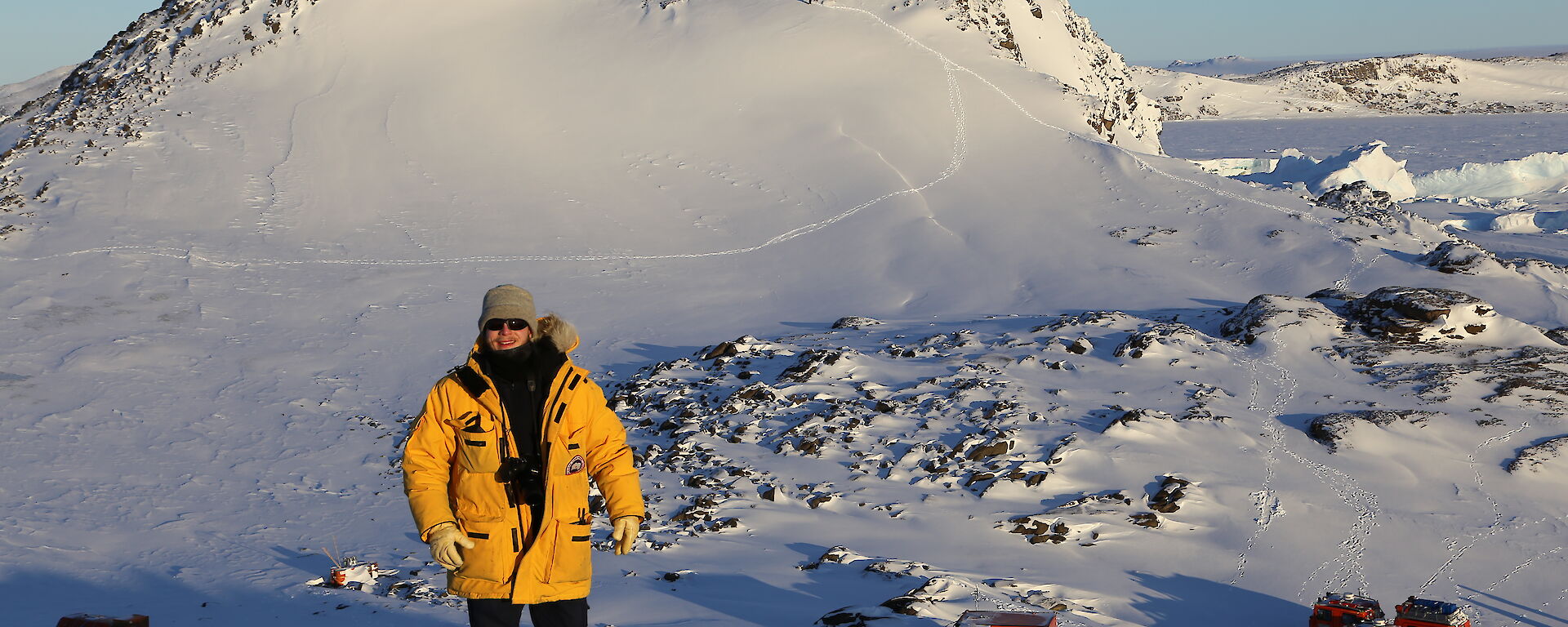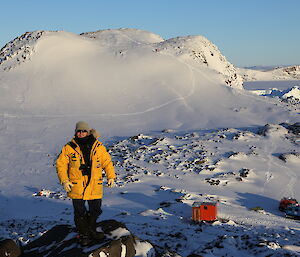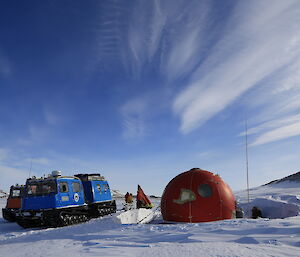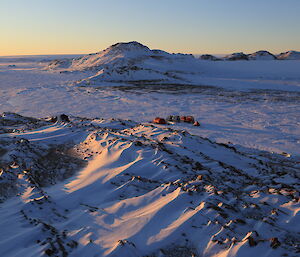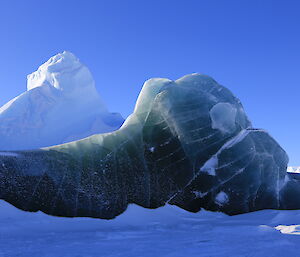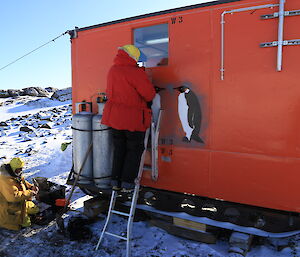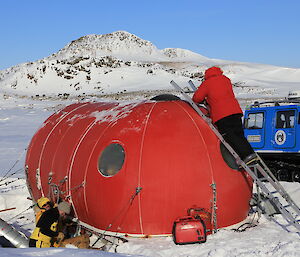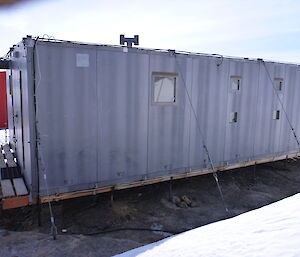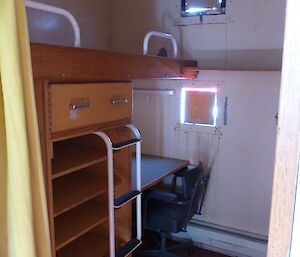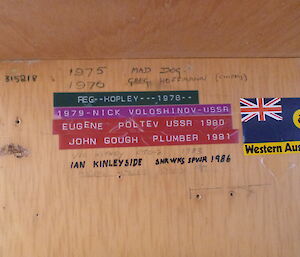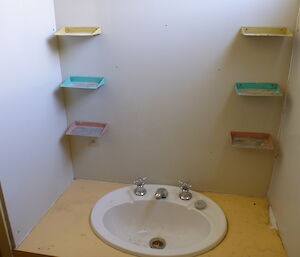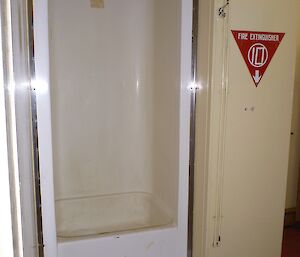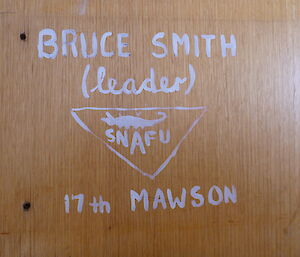Taking turns to write articles throughout the year can sometimes result in delays in getting the latest happenings on and off station to readers of the weekly station news. The trip to Ledingham Depot in late September was mentioned in a previous story, but the actual trip details have been slow in following!
Ledingham Depot
September was an unsettled month at Mawson, with eight blizzards recorded. After weeks of planning and organisation for this field trip, it was no real surprise to have to wait patiently for a suitable weather window to arrive before setting out from station. However, as it turned out the wait was worth it and we were fortunate to have sunshine, low winds and clear skies for the five days we were away. September had been chosen as the best time to undertake the trip, with the sea ice at its thickest and most stable, and with longer days and slightly warmer temperatures.
The main trip objectives of the trip were to undertake work at two field huts: Colbeck and Ledingham Depot (100 kms and 160 kms respectively from Mawson) and to check on a fuel cache at Tilley Nunatak. It was also a valuable opportunity for our team of six to gain experience in operating in more isolated areas. In the party were Peter Layt (carpenter), Paul Amos (mechanical supervisor), Angus Cummings (BOM), Evan Davis-Goff (plumber), Peter Lecompte (electrician) and John Burgess (field training officer).
Colbeck hut is located on an island in the Colbeck archipelago and is used as a shelter for visitors to the Taylor Glacier area, in particular to monitor the Taylor Glacier emperor penguin colony. Ledingham Depot is situated in the Stillwell Hills, on the eastern edge of Enderby Land and is rarely visited. The fibreglass shelter was towed on a sled from Mawson in the mid-nineties to serve as a base for scientific parties working in the area.
The first stage from Mawson to Colbeck via Low Tongue was known ground from previous trips in the winter and we had ideal travel conditions for our two Hägglunds vehicles, one towing a sled loaded with fuel. The sea ice was in excellent condition with very few tide cracks and no rafted ice to contend with. Arriving at the hut in the early afternoon we did our repairs and checks, then enjoyed the chance to wander around the nearby hills and take in the grandeur of the area.
On the second day we continued on to Ledingham Depot, with a slight detour to check out an old fuel cache at Tilley Nunatak. The sea ice provided mainly smooth travel and anticipated problems with tide cracks and soft surface snow never eventuated.
For the next two days we carried out maintenance tasks and checks on the hut and also found time to explore the area around the Stillwell Hills with its many fjords, bays and inlets. It was a great feeling to be working and recreating in such a spectacular, isolated area — it’s not every year that expeditioners get the opportunity to visit Ledingham Depot and we all felt very lucky.
Day four, the party headed back towards Colbeck hut, calling in at Proclamation Point where Douglas Mawson landed in 1931 and laid claim for Australia. A highlight of the day was walking along the edge of the Taylor Glacier in the soft afternoon light, watching emperor penguins coming and going on their way to the Taylor Glacier colony.
On our last day we headed back to Mawson, stopping halfway to photograph an amazing jade iceberg.
The Ledingham Depot traverse had been a fantastic trip: a great group of people, ideal weather conditions, all maintenance tasks completed and the privilege of visiting an area which is well off the beaten track.

